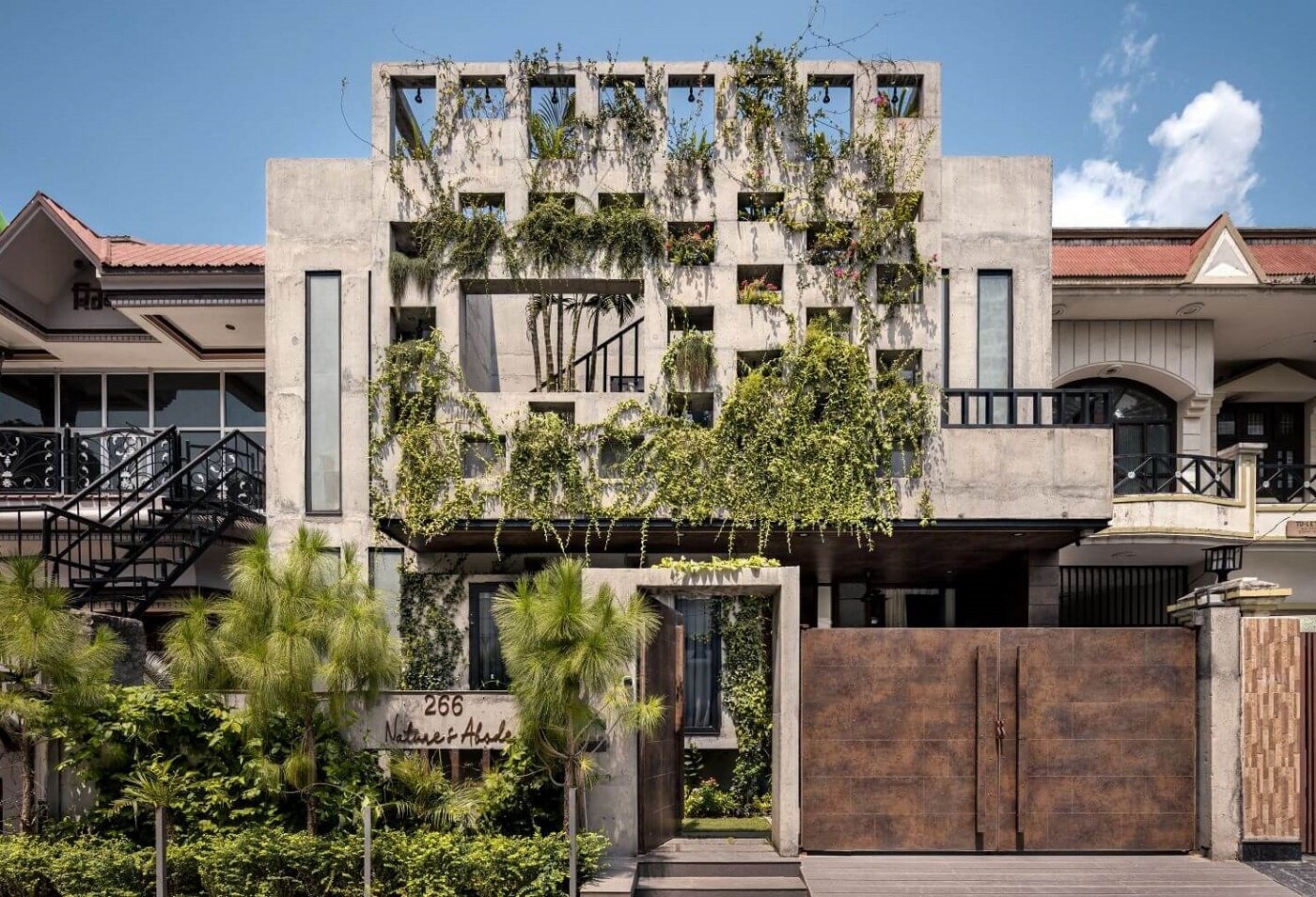#17326. Concrete Facade with Biophilic Design: When Brutalism Meets Nature

The modern facade of this house is an impressive example of biophilic design integration into urban architecture. The concrete structure with its cellular pattern creates a distinctive rhythmic design that is softened by abundant vegetation literally woven into the architectural form. The number 266 with the inscription "Nature+Abode" perfectly reflects the building's concept.
The facade demonstrates a bold combination of brutalism and ecological aesthetics. The massive concrete structure with geometric apertures serves not merely as a decorative element but as a functional foundation for vertical gardening. Climbing plants, hanging vines, and fluffy coniferous plantings at the base of the building create a multi-layered green envelope that softens the severity of the concrete and brings natural dynamics.
There's an interesting contrast with the more traditional buildings on either side, featuring sloped roofs with tiles. The metal gates and stair railings complement the industrial aesthetic while not appearing alien thanks to the overall harmony of the composition.
For private construction, this approach offers several interesting techniques: using modular concrete structures with niches for plants, combining strict geometric forms with the softness of greenery, creating multi-level landscaping (from ground to vertical), and the artistic juxtaposition of materials (concrete, metal, living plants). This facade demonstrates how a modern house can become a true oasis of greenery even in dense urban development.